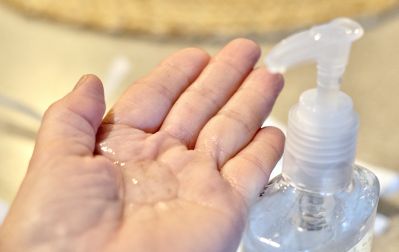Current hand hygiene guidelines do not provide recommendations on a specific volume for the clinical hand rubbing procedure. According to recent studies volume should be adjusted in order to achieve complete coverage. However, hand size is a parameter that highly influences the hand coverage quality when using alcohol-based handrubs (ABHR). The purpose of this study by Voniatis, et al. (2021) was to establish a quantitative correlation between applied ABHR volume and achieved hand coverage.
ABHR-based hand hygiene events were evaluated utilizing a digital health device, the Semmelweis hand hygiene system with respect to coverage achieved on the skin surface. Medical students and surgical residents (N = 356) were randomly selected and given predetermined ABHR volumes. Additionally, hand sizes were calculated using specialized software developed for this purpose. Drying time, ABHR volume awareness, as well spillage awareness were documented for each hand hygiene event.
Hand coverage achieved during a hand hygiene event strongly depends on the applied ABHR volume. At a 1 ml dose, the uncovered hand area was approximately 7.10%, at 2 ml it decreased to 1.68%, and at 3 ml it further decreased to 1.02%. The achieved coverage is strongly correlated to hand size, nevertheless, a 3 ml applied volume proved sufficient for most hand hygiene events (84%). When applying a lower amount of ABHR (1.5 ml), even people with smaller hands failed to cover their entire hand surface. Furthermore, a 3 ml volume requires more than the guideline prescribed 20–30 s to dry. In addition, results suggest that drying time is not only affected by hand size, but perhaps other factors may be involved as well (e.g., skin temperature and degree of hydration). ABHR volumes of 3.5 ml or more were inefficient, as the disinfectant spilled while the additional rubbing time did not improve hand coverage.
The researchers conclude that hand sizes differ among HCWs, and that after objectively measuring participants, the surface of the smallest hand was just over half compared to the largest hand (259 cm2 and 498 cm2, respectively). While a 3 ml ABHR volume is reasonable for medium-size hands, the need for an optimized volume of handrub for each individual is critical, as it offers several advantages. Not only it can ensure adequate hand hygiene quality, but also prevent unnecessary costs. Bluntly increasing the volume also increases spillage and therefore waste of disinfectant in the case of smaller hands. In addition, adherence could potentially decrease due to the required longer drying time, therefore, adjusting the dosage according to hand size may also increase the overall hand hygiene compliance.
Referene: Voniatis C, et al. A large-scale investigation of alcohol-based handrub (ABHR) volume: hand coverage correlations utilizing an innovative quantitative evaluation system. Antimicrobial Resistance & Infection Control. Vol. 10, article number 49. 2021.

одна среди причин широкого признания –
комфортные условия сотрудничества для жителей разных
стран и честная политика администрации в.
My site live-casino
переводы проводятся быстро и без каких-нибудь тяжелых комиссий сперва раменбет официальный сайт оператора.
black-wood ltd.
Visit my site :: ramenbet
Человек развлекал себя и вовлекал в нее
окружающих.
Also visit my blog; ramblermails.com